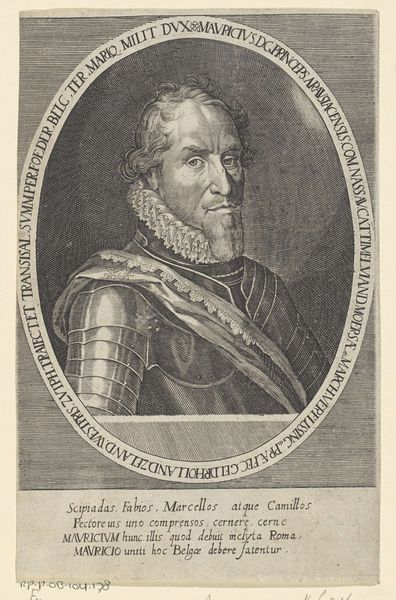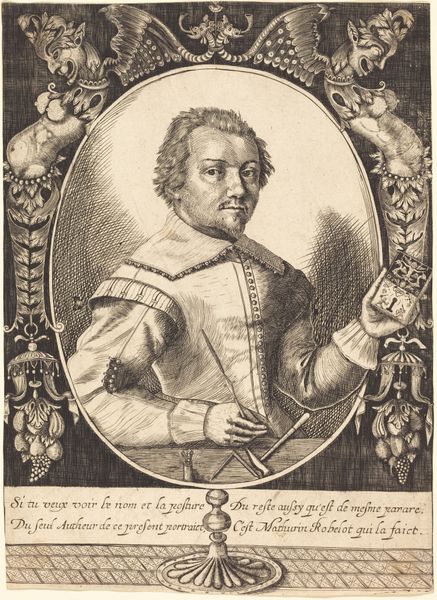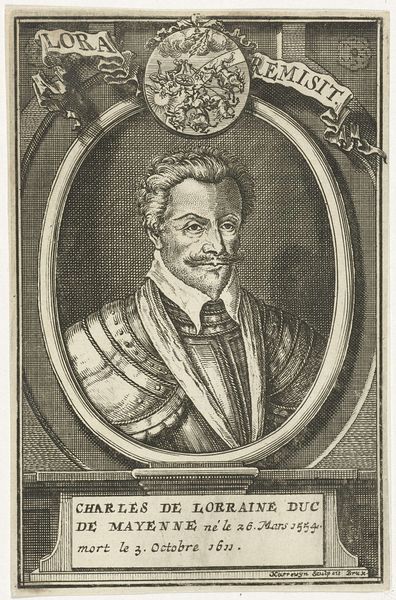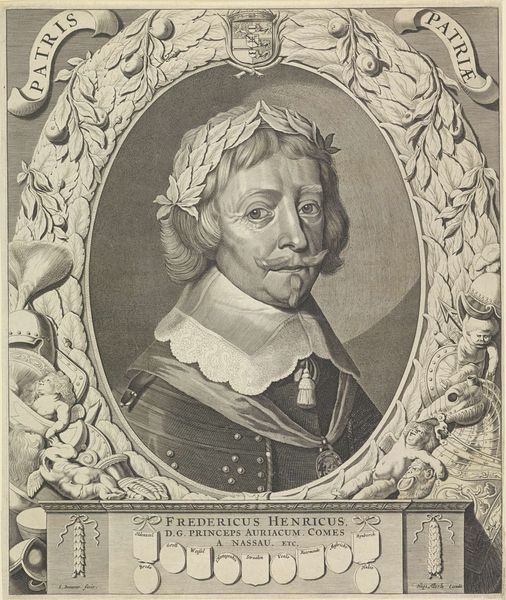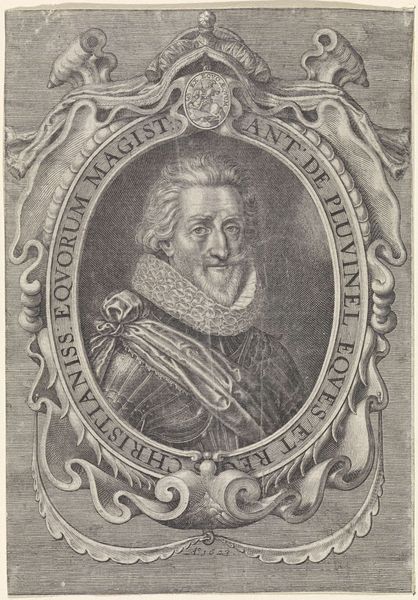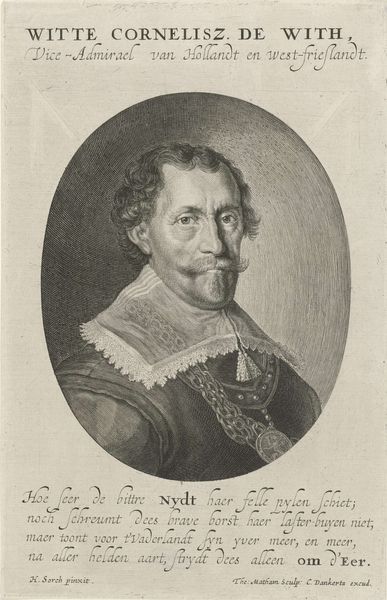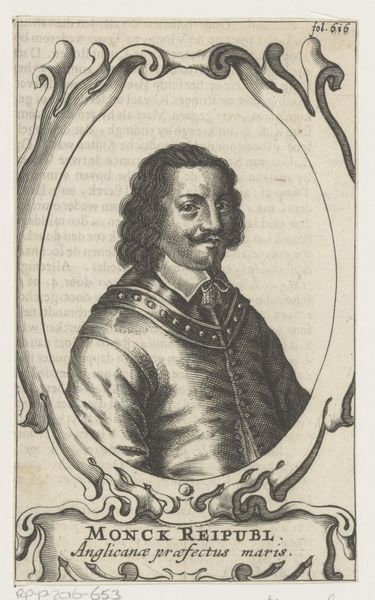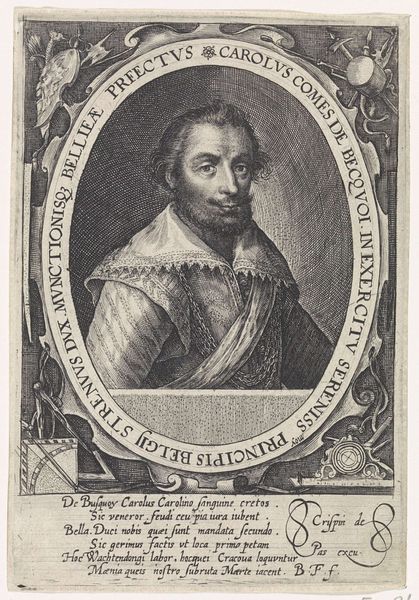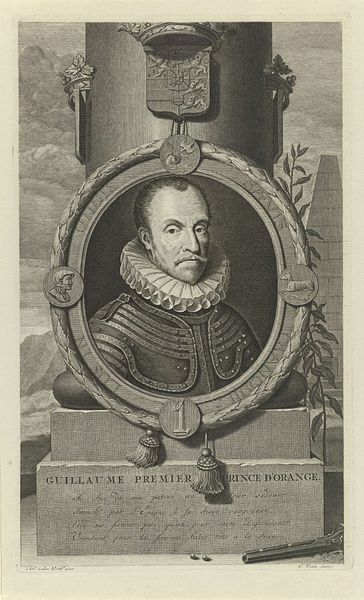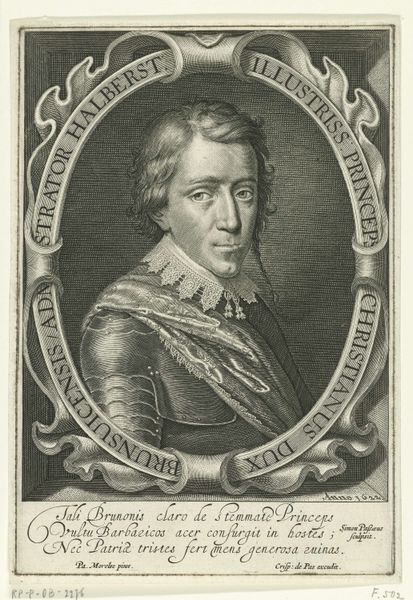
print, engraving
#
portrait
#
baroque
# print
#
history-painting
#
engraving
Dimensions: height 88 mm, width 74 mm
Copyright: Rijks Museum: Open Domain
Curator: Well, the somber tones create a suitably serious mood. I'm particularly drawn to the artist’s precise rendering of texture. Editor: Here we have "Portret van Ernst Casimir, graaf van Nassau-Dietz," created in 1632 by Crispijn van de Passe the Younger. It is currently housed here at the Rijksmuseum. This print utilizes the engraving technique to portray Count Ernst Casimir of Nassau-Dietz. Curator: Engraving! Note the painstaking process of incising lines into a metal plate. The labor alone speaks volumes, literally carving power into the image. Consider too how a print makes portraiture accessible—replicable and circulated beyond the elite. Editor: Absolutely, the socio-political context of portraiture in the 17th century is fascinating. Ernst Casimir, as Count of Nassau-Dietz, held significant political sway, and commissioning portraits, or in this case having his likeness reproduced in print, became a powerful tool for constructing and disseminating his image and, of course, his dynastic lineage. The very act of distributing these images reinforces his authority. Curator: And think about the consumption! Who acquired these prints? Where were they displayed? A material object acting as a conduit of political ideology. Also look at the collar, so intricate, must have taken so long to render. Editor: The choice of attire and the elaborate frame all serve to amplify his status, influencing public perception and reinforcing his authority within the broader social and political landscape of the Dutch Republic. Curator: Indeed, the work, as a repeatable object, acts as both artwork and a tool for power, its material composition adding meaning, beyond just visual qualities. Editor: A perspective that is equally shaped by socio-historical factors of access, visibility and authority. What a potent illustration of art functioning within a very specific power structure. Curator: Precisely, bringing history and the materiality of this artwork into play, you appreciate the work not only for whom it shows, but what it enables! Editor: This close examination of its purpose definitely allows us to walk away with new questions, particularly on the cultural relevance of portraiture in Baroque.
Comments
No comments
Be the first to comment and join the conversation on the ultimate creative platform.

